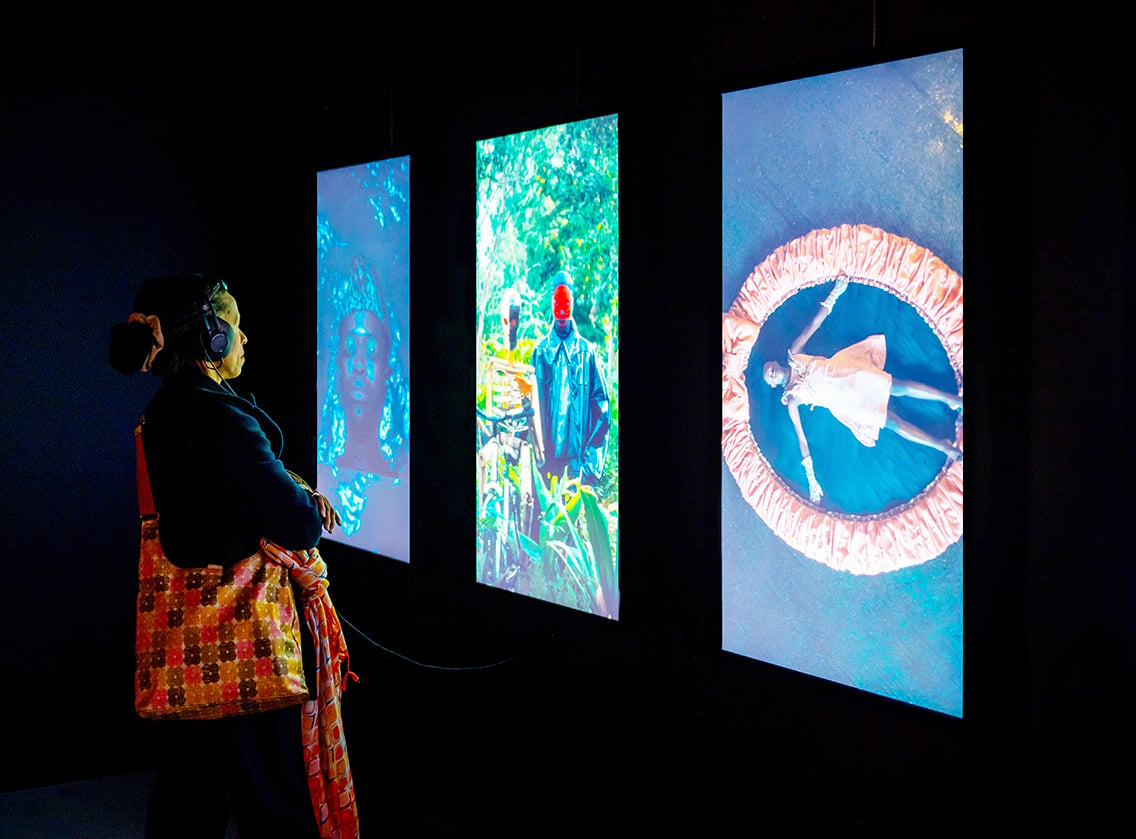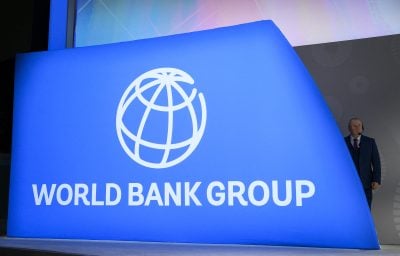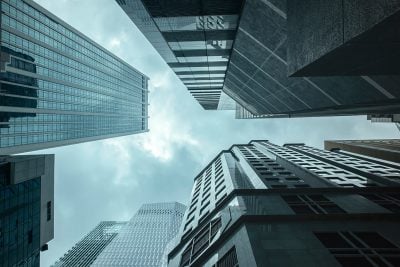Since its founding in 2013 by Touria El Glaoui, 1-54 has grown into a leading global platform for African and diasporic art, with annual editions in London, New York, and Marrakech. It has shifted the landscape of art fairs by centring African perspectives and building networks across continents. Yet what makes the 2025 London edition particularly significant is its dual emphasis on the future and the past: presenting a bold selection of contemporary voices while highlighting the enduring importance of modern African masters.
Anchoring African modernism
For decades, the work of African modernists was overlooked in global narratives of modern art. While European and American counterparts were canonised, artists across Africa were building equally vital movements that often remained underrepresented in museums and markets.
This year, 1-54 foregrounds those histories. Tristan Hoare Gallery presents Seydou Keïta and Malick Sidibé, two Malian photographers who shaped the visual identity of Bamako in the mid-20th century. Keïta’s studio portraits, with their patterned backdrops and poised sitters, turned the photographic studio into a theatre of modern self-representation. Sidibé’s images, by contrast, chronicled the exuberance of Bamako’s nightlife, its dancing bodies and youthful energy. Together, they transformed African photography into a language of liberation and joy. The gallery also shows works by Senegalese painter Gora M’Bengue, whose practice combined Wolof traditions with a modernist sensibility, articulating a visual vocabulary that was both deeply local and globally resonant.
Loeve&Co brings another essential figure into focus: Roland Dorcély, the Haitian painter whose abstract works connected African and Caribbean modernisms. His inclusion underscores the importance of thinking of African art not only in continental terms but also within the wider Afro-Atlantic world.
Alongside these presentations, OH Gallery from Dakar contributes a striking roster of modern and postmodern Senegalese artists. Figures such as Soly Cissé and Viyé Diba have long shaped Senegal’s art scene with work that merges abstraction, figuration, and social commentary. The late sculptor Ousmane Sow, famed for his monumental depictions of wrestlers and historical scenes, is a towering presence in African modernism and a reminder of sculpture’s central role in the continent’s artistic heritage.
Théodore Diouf and Méné expand the range of Senegalese perspectives, while younger artists including Oumar Ball and Aliou Diack show how a new generation continues to engage with, and reinterpret, the legacies of their modernist predecessors. Together, these artists position Senegal as a key site for understanding how modern African art developed and how it continues to evolve.
Expanding infrastructure
Another defining feature of this year’s edition is the significant number of debut galleries: 14 in total. Many hail from Africa and the Global South: O’DA Art from Lagos, Gallery Misr from Cairo, KUB’ART Gallery from Kinshasa and Montreal, OH Gallery from Dakar, and the 1897 Gallery from Lagos.
Their presence signals a strengthening of African art ecosystems. Modernist works, long circulated primarily through European or American institutions, are increasingly contextualised and exhibited by galleries based on the continent. This ensures that modern African artists are rooted within local histories even as they reach global audiences.
The dialogue between modern and contemporary practice becomes richer when the infrastructure supporting it is itself anchored in African cities.
Nigeria and South Africa as powerhouses
Nigeria and South Africa once again demonstrate their pivotal role in shaping African art, historically and today.
From Nigeria, exhibitors such as Affinity, Ed Cross, O’DA Art, SOTO, and The 1897 Gallery present a spectrum of voices. Samuel Nnorom’s textile-based sculptures transform fabric into architectural forms, echoing the material inventiveness of Nigerian modernists. Austin Uzor’s paintings combine dreamlike imagery with abstraction, while Gbolahan Ayoola explores spirituality and identity on bold canvases. Their work extends a lineage that includes earlier figures such as Uche Okeke and Ben Enwonwu, showing how Nigerian art continually reinvents itself while honouring its roots.
South Africa, with exhibitors including Afronova Gallery, Eclectica Contemporary, Filafriques, Guns & Rain and kumalo | turpin, showcases both depth and diversity. Alice Mann’s photography celebrates the phenomenon of all-female drum majorettes; Zana Masombuka reinterprets Ndebele traditions through performance and installation; and Reggie Khumalo combines painting with activism.
This thriving scene is possible thanks to a strong network of institutions, residencies, and artist-led initiatives that extend back to the country’s modernist pioneers such as Gerard Sekoto and Ernest Mancoba. Both countries demonstrate how modernist foundations continue to shape the most dynamic contemporary practices today.
Intersections of past and present
The strength of 1-54 lies in its ability to place modern and contemporary practices side by side, inviting audiences to trace the lines of influence across generations.
Ndidi Emefiele, represented by Gallery Rosenfeld, builds on Nigeria’s figural traditions but reimagines them through a feminist lens.
Her large-scale canvases, often collaged with textiles, confront stereotypes while celebrating black womanhood.
Zenaéca Singh, shown by Guns & Rain, uses molasses on cotton to craft works that are both fragile and enduring. Her choice of material pushes against the boundaries of conventional media while recalling earlier African modernists who worked resourcefully with locally available materials.
Alexis Peskine, at October Gallery, creates striking portraits by hammering nails into wooden panels, a technique that fuses sculpture and painting. His subjects, often from the African diaspora, radiate resilience and dignity, echoing the gravitas of Keïta and Sidibé’s photographic sitters.
Placed together, these artists remind us that African modernism is not an isolated past but a living continuum that contemporary artists extend in new directions.
Market and institutional dynamics
The recognition of African modernists has accelerated in recent years, with auction houses, museums, and collectors increasingly seeking their work. Christie’s, now in its sixth year of partnership with 1-54, has played a role in this shift, giving African artists greater visibility within the secondary market. The announcement of Afreximbank as 1-54’s new lead partner is another sign of art’s growing role in African economies. Through its art programme the bank supports artists and cultural initiatives across the continent, underscoring the idea that culture is integral to trade, development, and international relations.
These partnerships situate modern and contemporary African art not only within cultural frameworks but also within financial and economic ones, signalling its importance as both heritage and investment.
Special projects
Beyond the gallery booths, 1-54’s special projects bring curatorial experimentation and cross-disciplinary dialogue into the heart of Somerset House.
In the Somerset House courtyard, Portuguese visual artist, filmmaker and researcher of Angolan descent, Mónica de Miranda, stages Earthworks, a site-specific installation inspired by Achille Mbembe’s concept of “terrestrial communities”. The work brings together ecology, memory, and decolonial thought in a living landscape of resistance and care.
Nando’s, in partnership with Spier Arts Trust, presents works by Anastasia Pather, Boyce Magandela, and Mbuso Hlongwa (with Qaqambile Bead Studio), continuing its long-term support for Southern African artists through a collection that now numbers over 30,000 works displayed worldwide.
Everyday Lusaka Gallery, founded in 2018, presents The Inherited Counter-Archive, a project curated by Sana Ginwalla and featuring the work of veteran photographer Alick Phiri. Reimagining Zambia’s first photo studio for black clients, the installation interrogates colonial visual regimes and constructs an alternative archive rooted in everyday life.
The arts collective Art Comes First explores the theme of The Sartorial Spirit of Punk Tailors, blending African craftsmanship with British sartorial traditions in an immersive installation that spans multiple rooms. Their philosophy of “craftsmanship as foundation, punk as posture” reflects the ways in which rebellion and discipline coexist in diasporic style.
Seed Archives presents Form, Feeling, an installation that transforms the booth into a ritual space where visitors engage with objects inspired by West African social practices. The project invites collective learning and questions conventional museology by centring touch and embodied experience.
The PICHA Association and its extended collective brings works by Jean Katambayi Mukendi and Nkembo Moswala, highlighting Congolese talent and the centre’s role in supporting emerging artists through initiatives such as the Lubumbashi Biennale. Other highlights include a project by Monção on displacement and materiality, curated by Strangers House Gallery, through a dialogue between the India Art Fair Young Collectors’ Programme and 1-54; Kahlil Joseph’s BLKNWS: Terms & Conditions, presented by Rich Spirit as an immersive expansion of his cinematic practice; and ęmí: freedomsong by Rohan Ayinde and Tayo Rapoport, curated by Zarina Rossheart, which transforms grief into collective protest through song and film.
Individual installations will also feature prominently. Lakwena Maciver (Vigo Gallery) showcases How We Build a Home with vibrant new works from cardboard and beads sourced from London’s Ridley Road market, meditating on trade, resilience, and shared memory.
Leonard Pongo (Project Loop) unveils Primordial Earth, a sensorial allegory of Congolese landscapes. Egyptian artist Aliaa Elgready (Gallery Misr) continues her exploration of fragmentation and renewal with embroidered installations that invite participatory engagement.
These special projects demonstrate that 1-54 is not only a marketplace – but also a cultural forum where archives, ecology, ritual, cinema, and fashion converge to expand the scope of what an art fair can be.
Challenges and opportunities
While modern African art is gaining recognition, challenges remain. Estates are often underfunded, archives at risk, and scholarship still lags behind the market. Western museums are only beginning to catch up, and many important figures remain underrepresented in institutional collections.
Yet fairs like 1-54 create opportunities to shift this dynamic. By giving visibility to both modern masters and contemporary practitioners, they ensure that audiences, collectors, and institutions encounter a more complete history. They also encourage investment in research, conservation, and education that will secure these legacies for the future.
Looking ahead
The inclusion of modern African artists within 1-54 is not a nostalgic gesture but a forward-looking one. By connecting the legacies of Keïta, Sidibé, M’Bengue, and Dorcély to the practices of today’s artists, the fair rewrites narratives of modernism to include Dakar, Bamako, Lagos, and Port-au-Prince alongside Paris and New York.
For collectors, it is an invitation to engage with both contemporary voices and foundational modernists.
For institutions, it is a reminder that global art history must be rewritten with Africa at its centre. For artists, it affirms that they are part of a long lineage of experimentation, resilience, and creativity.
The 13th edition of 1-54 London is a testament to continuity and reinvention. By giving equal weight to modern legacies and contemporary voices, the fair celebrates African art as a living, evolving force. It underscores the idea that history is not a closed chapter but an active dialogue shaping the present.
As Touria El Glaoui notes, the fair brings together “an exceptional selection of galleries spanning five continents, with strong representation from Africa itself”. Within that framework lies an even deeper mission: to affirm that modern African art is foundational to global art history and that its legacy continues to shape the art of today.
Want to continue reading? Subscribe today.
You've read all your free articles for this month! Subscribe now to enjoy full access to our content.
Digital Monthly
£8.00 / month
Receive full unlimited access to our articles, opinions, podcasts and more.
Digital Yearly
£70.00 / year
Our best value offer - save £26 and gain access to all of our digital content for an entire year!

 Sign in with Google
Sign in with Google 



